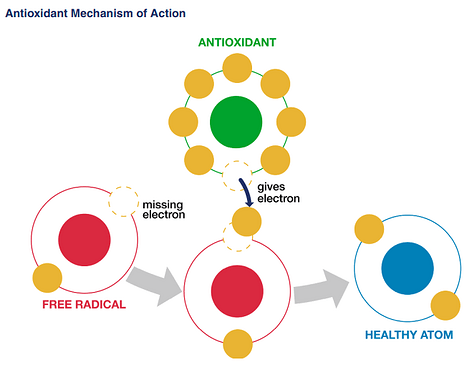CDER Drug Safety Priorities Fiscal Year 2023 report is now available.
https://www.fda.gov/media/176340/download?attachment
The report includes information on research conducted by the FDA on N-nitrosamines under the “Ensuring the Quality, Safety, and Effectiveness of Generic Medications” section. The research includes the following:
-
Studies with different antioxidants and pH modifiers to assess their potential to mitigate the formation of N-nitroso-bumetanide and N-nitrosodimethylamine (NDMA)
-
Studies to assess the effect of certain excipients in metformin drug products on the formation of NDMA during manufacturing, the effect of secondary amine drug substances with chemical structures that might support the formation of NDSRIs in a drug product
-
Development of analytical methods to detect NDSRIs in multiple drug products, resulting in the construction of an LC-HRMS analytical platform that can be broadly utilized for NDSRI analysis across a diverse range of drug products.
-
Research on in vitro and in vivo testing to inform compound-specific risk of NDSRIs, resulting in publications that detailed the enhanced bacterial mutagenicity testing conditions necessary for the hazard evaluation of nitrosamines and NDSRIs.
2 Likes
Including the text here for easy access. All from the linked report that Youske shared.
Research Related to N-Nitrosamines In FY23, FDA conducted research on strategies to reduce or prevent the occurrence of N-nitrosamine impurities in drug products that include small molecule nitrosamines and NDSRIs. These impurities may increase the risk of cancer if patients are exposed to them above AI limits and over long periods of time.
One proposed strategy to mitigate these risks involved incorporating an antioxidant into the drug product formulation. However, it was unknown which antioxidants could be suitable, at what concentrations they might be effective, and whether those concentrations of the relevant antioxidant might alter the bioavailability, or bioequivalence, of a generic drug product. To address these knowledge gaps, we used innovative techniques and approaches to conduct research. For example, our scientists studied different antioxidants and pH modifiers to assess their potential to mitigate the formation of N-nitroso-bumetanide and N-nitrosodimethylamine (NDMA) and evaluated assays to assess the mutagenicity potential of N-nitrosamine impurities. We also conducted research to assess the effect of certain excipients in metformin drug products on the formation of NDMA during manufacturing, studied the effect of secondary amine drug substances with chemical structures that might support the formation of NDSRIs in a drug product, and developed analytical methods to detect NDSRIs in multiple drug products, resulting in the construction of an LC-HRMS analytical platform that can be broadly utilized for NDSRI analysis across a diverse range of drug products. The results from our research have developed powerful tools to study N-nitrosamines, identified underlying risk factors contributing to these contaminations, elucidated how NDSRIs occur in drug products, and provided insights about how to prevent their occurrence.
OGD’s Division of Pharmacology/Toxicology Review (DPTR) also continued to collaborate with scientists at FDA’s National Center for Toxicologic Research on in vitro and in vivo testing to inform compound-specific risk of NDSRIs, resulting in publications that detailed the enhanced bacterial mutagenicity testing conditions necessary for the hazard evaluation of nitrosamines and NDSRIs. DPTR also participated in a panel session in the Generic Drug Science and Research Initiatives Public Workshop in May 2023. Also in May, DPTR nitrosamine experts in the joint FDA-Health and Environmental Sciences Institute (HESI) Research Roadmap Planning on Hazard and Risk Assessment of Nitrosamine Impurities in Drugs workshop to discuss pharmacology/toxicology research needs with industry and academic experts.
FDA also funded research conducted by experts outside of FDA, including a study to evaluate the impact of several antioxidants on the in vitro permeability of four biopharmaceutics classification system (BCS) III model drugs using a Caco2 monolayer system. This research was complemented by studies performed under an FDA grant to the Centers of Excellence in Regulatory Science and Innovation (CERSI), a joint undertaking among the University of California-San Center for Drug Evaluation and Research, Drug Safety Priorities 2023 25 Francisco (UCSF), Stanford University, and the Agency. The CERSI research focused on assessing the potential effect of antioxidants on the functionality of three intestinal transport proteins: P-gp, BCRP, and OATP2B1. These data will provide fundamental information to inform the need for in vivo bioavailability or bioequivalence studies for certain drug products that are reformulated to add certain antioxidants to mitigate formation of nitrosamine impurities.
2 Likes
CDER Drug Safety Priorities Fiscal Year 2024 is now available. The mitigation strategy using a Solid dispersion is under investigation. The relevant section is shown below:
We also initiated a project investigating a potential approach for suppressing NDSRIs by using amorphous solid dispersion in the formulation design. This approach may potentially be generalized to other vulnerable active pharmaceutical ingredients in products as an additional mitigation strategy to the ones currently available.
